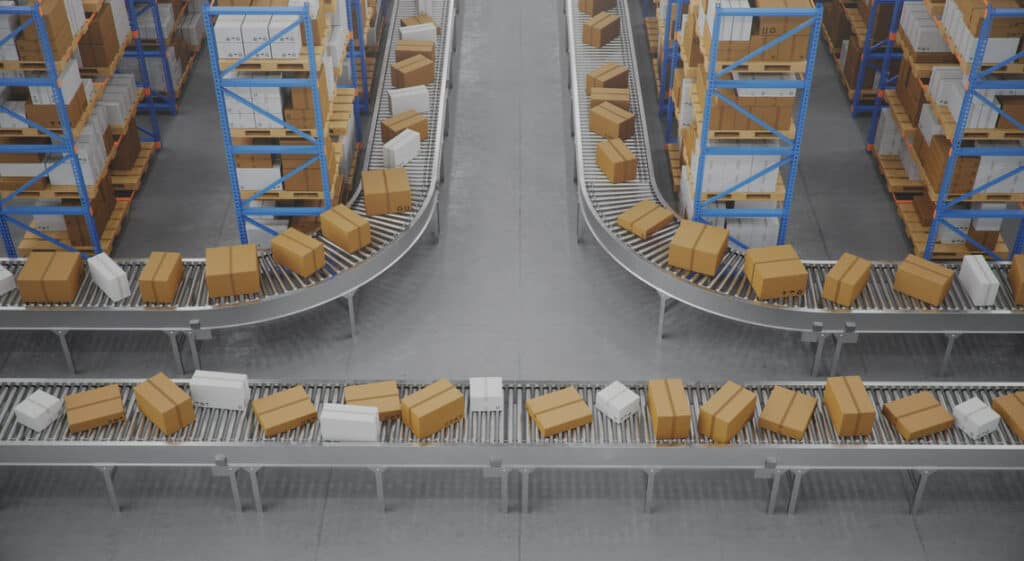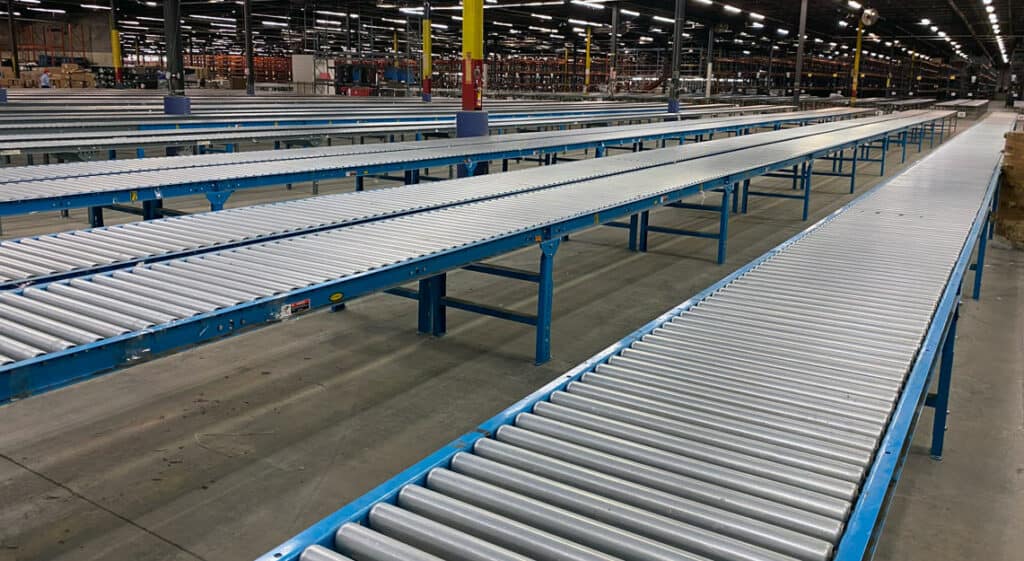How to Maximize Productivity With Your Next Conveyor
Picture this: your team is wasting dozens of hours every week moving inventory when they could be doing more valuable work. What is the solution? If you know what to look for, a conveyor system could be the answer.
Depending on which kind you select, a conveyor system can lead to a massive increase in productivity (translation: a raise for you) or one big headache.
Let’s go over some information you need to know about conveyors and how you can ensure you invest in one that helps your team get more work done in less time.
How a Conveyor System Can Improve Productivity
There are so many ways that adding conveyors to your warehouse can increase your throughput. Most will vary based on your operation’s workflow, but here are a few of the biggest benefits.
Increased Floor Space
Whenever possible, it’s a great idea to free up floor space by building upwards in your warehouse. The upper loft area of a facility is often a treasure trove of unused headroom that can really help maximize the amount of available space your team has to work with.
Overhead conveyors can help by transporting materials in the upper area of your facility while your team works on other tasks below.
Streamlining Inventory and Processes
The amount of movement your team generates when they’re in the zone can be a thrilling sight to behold. But that movement can quickly turn into a massive headache in the case of any disruption to your routine.
Instead of organizing workers to move and transport products around each other, a conveyor system can create a streamlined flow for consistent work and throughput. This will have a drastic impact on the amount of inventory they are able to move. It will also limit the risk of disruptions and accidents.

Things to Consider When Purchasing a Conveyor
When you’re looking to buy a conveyor, you’ll want to ensure you consider a wide range of variables. Here are some key items to think about:
Application
The first thing to consider is how the conveyor system will work in your operation. Will it be permanently located at your distribution center, or is conveyor portability important? What are the dimensions of the product(s) you will be moving? Are the items heavy, light, rigid or flexible? Each determines what type of conveying system works best for the application.
There is a tendency to think in terms of present conveying needs or at most a year or two down the road. However, most situations require a long-term approach, both in terms of design and growth.
Anticipating Growth or Other Changes
There is a tendency to think in terms of present conveying needs or at most a year or two down the road. However, most situations require a long-term approach, both in terms of design and growth.
Modular components allow for a custom configuration of the conveyor system but also provide flexibility should reconfiguring occur due to growth or an improved workflow. This capability could be the difference between adding or changing a few components and replacing your conveyor system altogether.
Reliability and Ease of Maintenance
Time is money and your company is losing it if your conveyor system suffers from unplanned downtime due to mechanical failure or unscheduled maintenance. Everyone likes having the latest equipment, however, new designs are rarely issue-free in the first production year. Sometimes it is better to invest in products with a good track record.
Another item to consider is the ability to service the conveyor. Regardless of reliability, conveyors endure a certain level of use/abuse that will require maintenance. Two key items to investigate are easy access to parts and replacement parts availability when required. Hard-to-get parts or parts difficult to install all add downtime your company cannot afford.

Considering a Conveyor System to Maximize Productivity?
At East Coast Storage Equipment, we provide customized conveyor system solutions that maximize efficiency in your warehouse. CONTACT US
Improving Productivity
Check out the ergonomics of the conveyor as it relates to the workforce. Recent studies reveal an important connection between ergonomics and productivity. An ergonomically designed conveying system improves productivity and can reduce the number of workman’s comp claims.
The Main Types of Conveyors
Now that you have a solid understanding of how a conveyor will fit into your operation, it’s time to select a model.
There are two main categories of conveyors: gravity and power. Within those two categories, the types of conveyor systems differ in their intended use and capabilities. While there are tons of different types of conveyors, let’s discuss six of the most common.
Gravity Conveyors
It shouldn’t surprise you that these conveyors use gravity to move inventory and products. The weight of the products propels the machine and keeps the system moving.
While they do come with certain limitations, these systems are great for operations that want a low-maintenance option that will suffer less frequent breakdowns. It also won’t cost you any extra money to power, which is a major bonus.

Here are a few common types of gravity conveyors:
- Chute conveyors: These have smooth surfaces that allow products to flow freely along the line. By limiting friction, there is little to slow down or stop products from moving.
- Roller conveyors: These systems have rollers to carry inventory along the line.
- Wheel conveyors: These have a series of wheels to move the items forward.
Power Conveyors
Power conveyors use electricity or another source of energy to keep the inventory moving forward. While there are a lot of exciting options for creating custom systems with power conveyors, they can be more prone to mechanical issues and will require more maintenance.
The benefits of this type of conveyor, however, are impressive. Power conveyors can transport products on an incline or on a timer system.
Here are some common types of power conveyors:
- Belt conveyors: Using a flat surface atop a series of rollers, this system guides inventory through a loop.
- Accumulation conveyors: These are customizable conveyors that allow you to manage the flow of inventory along specific spots in a line, slowing and halting movement when the flow reaches capacity.
- Chain conveyors: For operations that deal with overweight and oversized inventory such as pallets, these are ideal. They use heavy-duty chains to move items.
Improve Productivity With Your Next Conveyor
Applying this helpful information will go a long way to ensuring the successful implementation of your new conveyor system. However, there is one last suggestion. Be sure to work with an experienced conveyor systems integrator. Their experience and perspective are invaluable resources and can ensure your conveyor doesn’t end up costing you more time and money than you’d hoped to spend.
If you’re looking for personalized storage solutions to improve productivity in your operation, we’ve got you covered. At East Coast Storage Equipment, we provide customized equipment plans that maximize space and efficiency in your warehouse. Contact us to see how we can help.